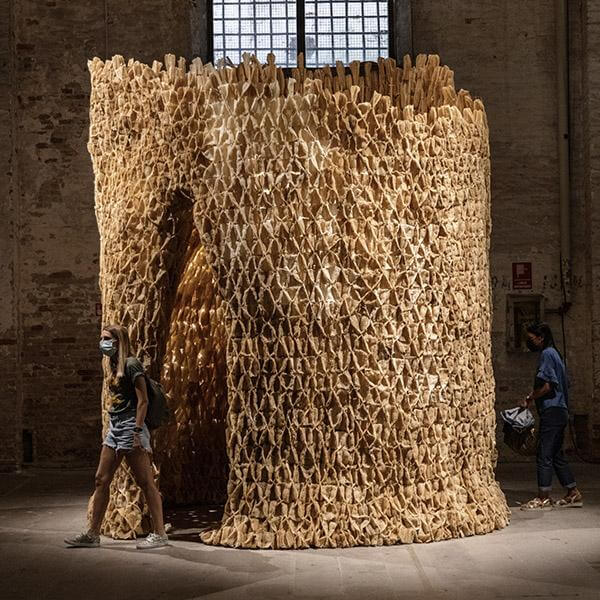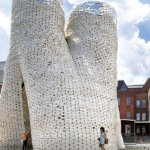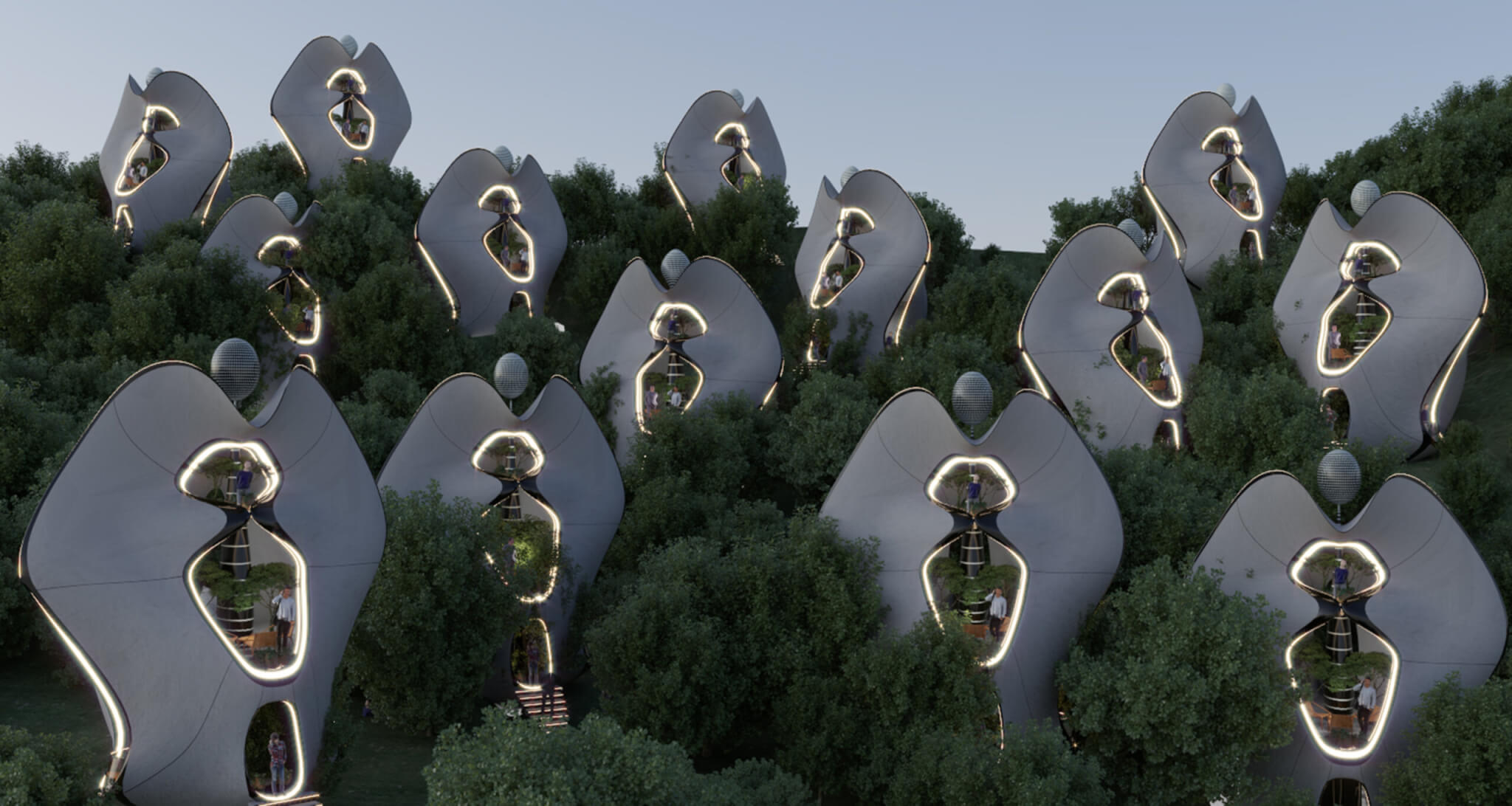The development of biotechnology and its different applications are subliminal — the use of living organisms as both the machine and product, and the symbiotic interaction between nature and production are posing unimaginable models to rethink the future. Not only is biotechnology successfully harnessing food and textile alternatives, but is nowadays at the forefront of innovative processes across design and architecture disciplines.
Most recent years have shed light on the way biotechnology intertwines theories of nature with building design principles to foster the co-existence of man and earth, resulting in breathtaking installations that are as alive as the ones inhabiting those structures: they breathe, react to the environment, produce energy and in some cases, grow too. The paradox of capitalism — that we’re incentivised to use anything and anyone to continue expanding, and that might even mean growing together. But maybe that’s just a naive view of what we could do if the use of biotechnology were harnessed, as exposed in the following instances.
Scrolling through the different projects that steal our breath, I continue to stumble over the silk pavilion developed by MIT Media Lab a decade ago — if you haven’t heard of it buckle yourself up because this has been one of its kind. The Mediated Matters Silk Pavilion, directed by the founder of the research program and Prof. Neri Oxman, created a 3D dome out of a single silk thread by combining digital and biological construction — in other words, by using a robotic arm, the silkworm’s “computational” movement was guided to weave a dome-shaped silk structure. And if silk sounds like it makes for a delicate structure, the installation proved that is resilient and strong, besides posing an ethical alternative to traditional silk farming and construction.
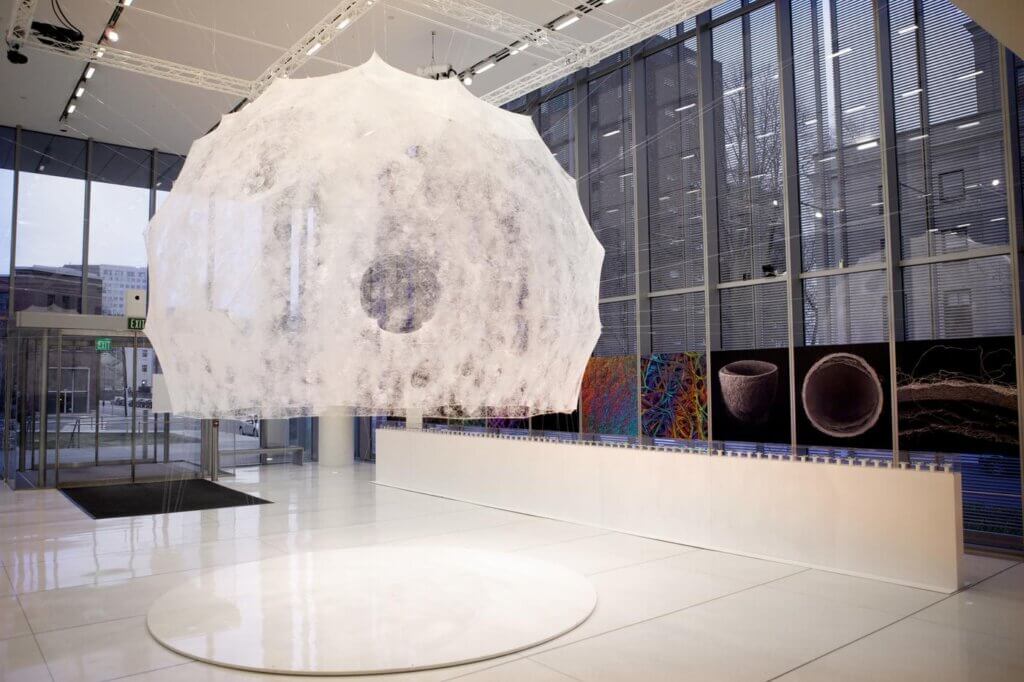
A year later, in 2014, another astounding bioengineered structure born from the collaboration between scientists, designers and living systems was erected. This time, the installation proved the scalability of bioengineering in architecture, adding to the possibilities presented by the three-meter-wide silk dome. With the Hy-FI, New York studio The Living brought to the MoMA PSI gallery a cluster of circular towers built with grown bio-bricks, made from corn stalks and mushrooms in 5 days. The towers, fully made of biodegradable materials, stood outside of the gallery during summer, providing a microclimate with its natural ventilation that drew cool air in at the bottom and pushed hot air out at the top.
Hy-Fi was the winning project of the annual Young Architects Program (YAP), a contest that every year invites emerging architects to propose temporary structures to host MoMA Ps1’s summer events. While those were some of the very first instances of experimental architecture, the next years have borne witness to different successful attempts, including The Growing Pavilion by artist Pascal Leboucq in collaboration with studio Krown Design, which was placed at the Dutch Design Week in 2019. The Pavilion was constructed with panels grown from mushroom mycelium supported on a timber frame, and it served as an events place during the fair.
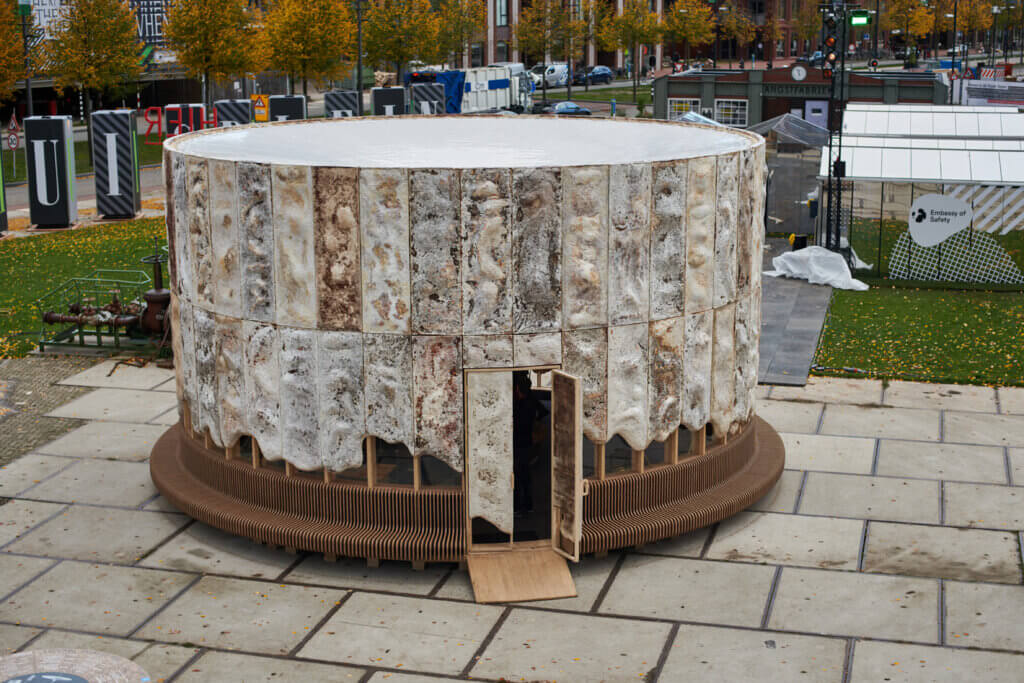
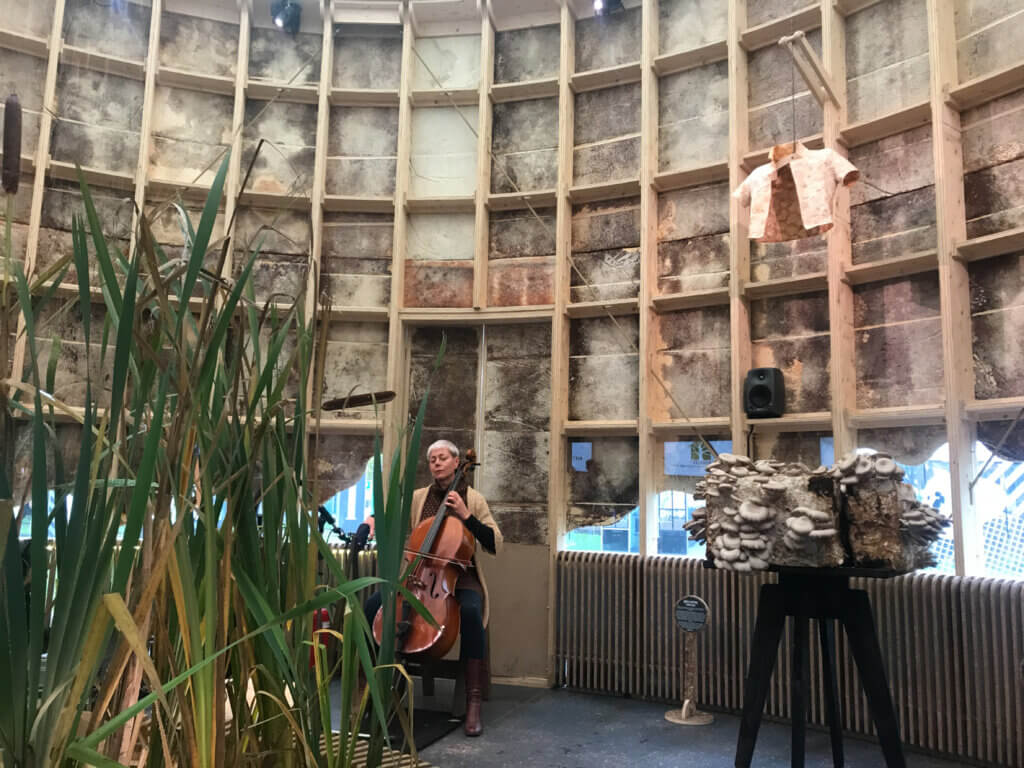
Then The Living came back with yet another grand structure, some years after the successful spiralling towers. The studio developed a pavilion for the Venice Architecture Biennale 2021, presented as part of the exhibition Among Diverse Beings. The structure was made with microbial material, more specifically, from dried fibres of luffa — a tropical vegetable that’s inexpensive, renewable and fast-growing — whose fibrous surfaces form a robust, adaptable and organic material suitable for hosting colonies of microbes. The different bio-based architecture studios are demonstrating the advancements of biologists and academics but more importantly, the potential of multi-species in large-scale installations will hopefully turn into long-standing buildings.
During the Biennale, the founder of The Living, David Benjamin, offered insights on how bio-sensing, bio-fabricating and bio-computing — and anything else that goes by bio — offer the tools to harness the power of microbial properties to create healthier environments for living species, including humans. These bio-receptive materials not only host microorganisms, but also create spaces for different moisture levels, air flow and nutrients, which in turn promote the health of people in their vicinity. How awesome is that?
*Header image: Hy-FI ©The Living
